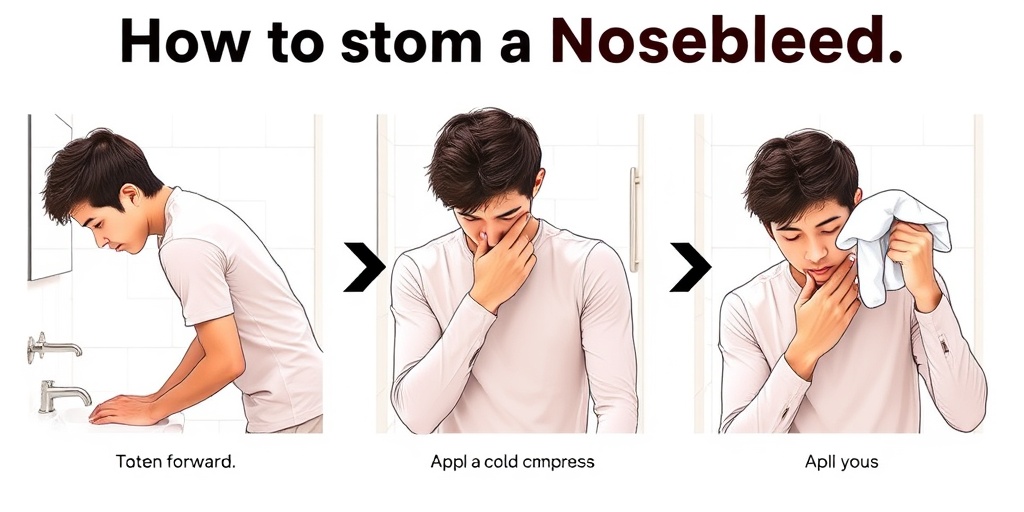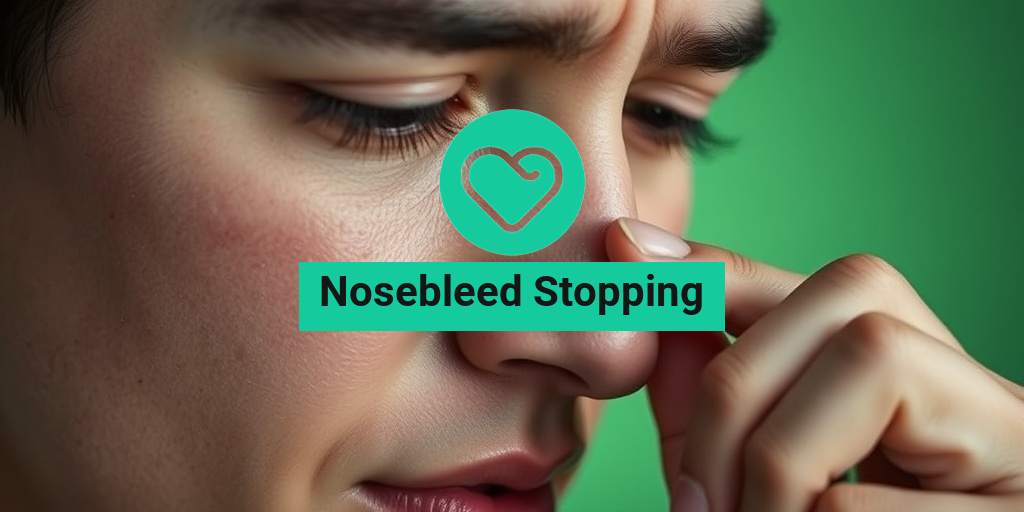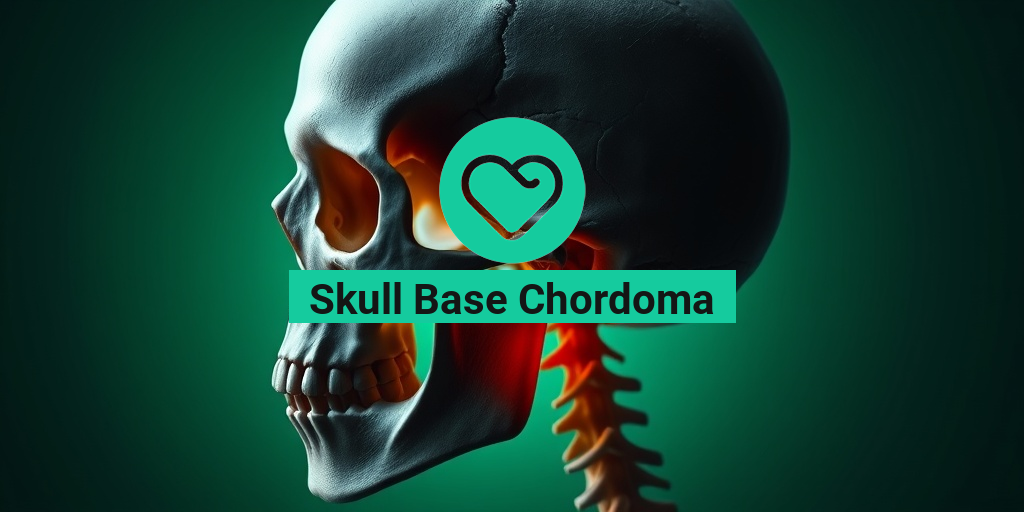What Is a Nosebleed?
A nosebleed, medically known as epistaxis, occurs when the delicate blood vessels in the nasal cavity rupture, leading to bleeding from the nostrils. While they can be alarming, nosebleeds are usually not serious and can often be managed at home. Understanding what a nosebleed is and how it happens can help you feel more prepared to handle one when it occurs.
Types of Nosebleeds
Nosebleeds can be categorized into two main types:
- Anterior Nosebleeds: These are the most common type, occurring in the front part of the nose. They are usually caused by minor irritations and are often easy to control.
- Posterior Nosebleeds: These are less common but can be more serious. They occur deeper in the nasal cavity and may require medical attention, as they can lead to more significant blood loss.
Common Causes of Nosebleeds
Nosebleeds can be triggered by a variety of factors. Understanding these causes can help you take preventive measures and know when to seek treatment. Here are some of the most common causes:
Environmental Factors
- Dry Air: One of the leading causes of nosebleeds, especially in winter months, is dry air. This can dry out the nasal membranes, making them more susceptible to bleeding.
- Allergens: Allergies can lead to inflammation and irritation in the nasal passages, increasing the likelihood of a nosebleed.
Physical Factors
- Nasal Trauma: Any injury to the nose, whether from a fall, a sports accident, or even aggressive nose blowing, can cause a nosebleed.
- Frequent Nose Picking: This common habit can damage the delicate blood vessels in the nose, leading to bleeding.
Medical Conditions
- Blood Disorders: Conditions that affect blood clotting, such as hemophilia or thrombocytopenia, can increase the risk of nosebleeds.
- High Blood Pressure: Elevated blood pressure can put additional strain on blood vessels, making them more prone to rupture.
Medications
Certain medications, particularly blood thinners like aspirin or anticoagulants, can increase the risk of nosebleeds. If you are on such medications, it’s essential to monitor for any signs of bleeding and consult your healthcare provider if you experience frequent nosebleeds.
When to Seek Medical Attention
While most nosebleeds can be managed at home, there are situations where you should seek medical help. If a nosebleed:
- Lasts longer than 20 minutes despite applying pressure
- Occurs after a head injury
- Is accompanied by other symptoms like dizziness or weakness
In these cases, it’s crucial to consult a healthcare professional for further evaluation and treatment.
Effective Nosebleed Stopping Techniques
Knowing how to stop a nosebleed effectively can make a significant difference in managing the situation. Here are some techniques that can help:
First Aid Steps
- Stay Calm: Anxiety can increase blood pressure, potentially worsening the bleed.
- Pinch the Nose: Use your thumb and index finger to pinch the soft part of your nose for about 10 minutes. This helps apply pressure to the bleeding vessels.
- Lean Forward: Leaning forward prevents blood from flowing down the throat, which can cause nausea or vomiting.
- Use Ice: Applying a cold compress or ice pack to the nose can constrict blood vessels and help stop the bleeding.
For those who experience frequent nosebleeds, consider keeping a nosebleed stopping kit handy, which may include saline nasal spray, a humidifier, and other helpful items. If you’re looking for more information on managing nosebleeds, resources like Yesil Health AI can provide evidence-based health answers.
In conclusion, while nosebleeds can be unsettling, understanding their causes and knowing how to stop them can empower you to handle the situation effectively. Remember, if you have concerns about frequent nosebleeds or their severity, don’t hesitate to consult a healthcare professional. 🌟

Symptoms of a Nosebleed
Nosebleeds, also known as epistaxis, can be alarming, but they are often harmless. Understanding the symptoms of a nosebleed can help you respond appropriately and effectively. Here are some common signs to look out for:
Common Symptoms
- Blood Flow: The most obvious symptom is the presence of blood, which may flow from one or both nostrils.
- Color of Blood: The blood can be bright red, indicating fresh bleeding, or darker, suggesting older blood.
- Feeling of Pressure: Some individuals may experience a sensation of pressure or fullness in the nose before a nosebleed occurs.
- Dryness or Irritation: A dry or irritated nasal passage can precede a nosebleed, often due to environmental factors like dry air.
Types of Nosebleeds
Nosebleeds are generally classified into two types:
- Anterior Nosebleeds: These are the most common and occur in the front part of the nose. They are usually easy to manage and stop.
- Posterior Nosebleeds: These occur deeper in the nasal cavity and can be more serious, often requiring medical attention.
Recognizing these symptoms can help you determine the best course of action when a nosebleed occurs. If you notice frequent nosebleeds or if they are accompanied by other concerning symptoms, it’s advisable to consult a healthcare professional. 🩺
How to Stop a Nosebleed
Knowing how to effectively stop a nosebleed is essential, especially if you or someone around you experiences one. Here are some practical steps to take:
Immediate Steps to Take
- Stay Calm: Anxiety can increase blood pressure, potentially worsening the bleeding. Take a deep breath and remain calm.
- Positioning: Sit up straight and lean slightly forward. This position helps prevent blood from flowing down the throat, which can cause nausea or choking.
- Pinch the Nose: Using your thumb and index finger, pinch the soft part of your nose just below the bony bridge. Maintain this pressure for about 5 to 10 minutes without releasing it.
Additional Techniques
If the bleeding continues, consider these additional methods:
- Cold Compress: Applying a cold compress or ice pack to the back of the neck or forehead can constrict blood vessels and help stop the bleeding. 🧊
- Nasal Sprays: Over-the-counter nosebleed stopping sprays can provide moisture and help clot the blood. These products are designed specifically for this purpose.
- Humidifiers: Using a humidifier in your home can help keep the nasal passages moist, reducing the likelihood of future nosebleeds.
When to Seek Medical Help
While most nosebleeds can be managed at home, there are situations where you should seek medical attention:
- If the nosebleed lasts longer than 20 minutes despite applying pressure.
- If the bleeding is heavy and you are losing a significant amount of blood.
- If the nosebleed occurs after an injury or trauma to the head.
- If you experience frequent nosebleeds without an obvious cause.
By following these steps, you can effectively manage and stop a nosebleed. Remember, staying calm and using the right techniques are key to resolving the situation quickly. 🌟

Home Remedies for Nosebleeds
Nosebleeds, while often alarming, are usually harmless and can be managed effectively at home. Understanding how to stop a nosebleed can empower you to handle this common issue with confidence. Here are some effective home remedies for nosebleed stopping that you can try:
1. Pinch Your Nose
One of the simplest and most effective methods for stopping a nosebleed is to pinch your nose. Follow these steps:
- Sit up straight and lean slightly forward to avoid swallowing blood.
- Using your thumb and index finger, pinch the soft part of your nose.
- Maintain pressure for about 5 to 10 minutes without releasing.
This technique helps compress the blood vessels and can significantly reduce bleeding. 🩸
2. Apply Ice
Using ice can also be beneficial in stopping a nosebleed. The cold temperature constricts blood vessels, which can help slow down the bleeding. Here’s how to do it:
- Wrap ice cubes in a cloth or use a cold pack.
- Place it on the bridge of your nose for 10 to 15 minutes.
This method is particularly effective for children, as it can distract them from the discomfort while aiding in stopping nosebleeds. ❄️
3. Humidify the Air
Dry air can lead to nosebleeds, especially in winter months. Using a humidifier in your home can help maintain moisture in the air, reducing the likelihood of nosebleeds. Consider these tips:
- Keep the humidifier clean to prevent mold and bacteria.
- Set the humidity level between 30% and 50% for optimal comfort.
Staying hydrated by drinking plenty of water can also help keep your nasal passages moist. 💧
4. Use Nasal Saline Spray
Nasal saline sprays are an excellent option for stopping nosebleeds caused by dryness. These sprays help moisturize the nasal passages and can be used regularly to prevent future occurrences. Look for products labeled as saline or saline nasal spray in your local pharmacy. 🧴
5. Avoid Irritants
To prevent nosebleeds, it’s essential to avoid irritants that can dry out or damage the nasal lining. Here are some common irritants to watch out for:
- Smoking or exposure to secondhand smoke.
- Strong odors from cleaning products or perfumes.
- Allergens like pollen or dust.
By minimizing exposure to these irritants, you can help maintain the health of your nasal passages and reduce the frequency of nosebleeds. 🚫
When to Seek Medical Help
While most nosebleeds can be managed at home, there are instances when it’s crucial to seek medical attention. Knowing when to consult a healthcare professional can ensure your safety and well-being. Here are some signs that indicate it’s time to seek help:
1. Frequent Nosebleeds
If you find yourself experiencing nosebleeds frequently, it may be a sign of an underlying health issue. Conditions such as high blood pressure or clotting disorders can contribute to recurrent nosebleeds. A healthcare provider can help identify the cause and recommend appropriate treatment.
2. Prolonged Bleeding
If a nosebleed lasts longer than 20 minutes despite applying pressure, it’s essential to seek medical help. Prolonged bleeding may indicate a more serious problem that requires professional intervention.
3. Blood in Vomit or Stool
Seeing blood in vomit or stool, especially if accompanied by a nosebleed, is a serious concern. This could indicate a more severe condition that needs immediate medical evaluation.
4. Difficulty Breathing
If you experience difficulty breathing during or after a nosebleed, it’s crucial to seek emergency medical assistance. This could be a sign of a more severe issue that requires prompt attention.
5. Nosebleeds After an Injury
Nosebleeds resulting from a head injury should always be evaluated by a healthcare professional. Injuries can lead to fractures or other complications that may require treatment.
Understanding how to manage nosebleeds effectively and knowing when to seek medical help can make a significant difference in your health and comfort. By following these home remedies and being aware of the warning signs, you can navigate nosebleeds with greater ease and confidence. 🌟

Preventing Future Nosebleeds
Nosebleeds can be a nuisance, but the good news is that many can be prevented with a few simple lifestyle changes and precautions. Understanding the causes of nosebleeds is the first step in prevention. Here are some effective strategies to help you keep those pesky nosebleeds at bay:
1. Maintain Humidity Levels
Dry air is one of the leading causes of nosebleeds. Using a humidifier in your home, especially during the winter months, can help keep the nasal passages moist. Aim for a humidity level of around 30-50% to create a comfortable environment.
2. Stay Hydrated
Drinking plenty of water is essential for overall health and can also help keep your nasal membranes hydrated. Aim for at least 8 glasses of water a day, and consider incorporating foods with high water content, such as fruits and vegetables, into your diet. 🍉🥒
3. Avoid Nose Picking
Nose picking can irritate the delicate tissues inside your nose, leading to bleeding. Encourage children and adults alike to avoid this habit. If you or your child feels the urge to pick, try using a saline nasal spray to keep the nasal passages moist instead.
4. Use Saline Nasal Sprays
Saline sprays can help keep your nasal passages moist and reduce the likelihood of nosebleeds. These sprays are safe for both adults and children and can be used regularly, especially in dry conditions.
5. Protect Your Nose
If you engage in activities that may lead to nasal injury, such as contact sports, consider wearing protective gear. A nose guard can help shield your nose from trauma that could result in a nosebleed.
6. Manage Allergies
Allergies can lead to nasal congestion and irritation, increasing the risk of nosebleeds. If you suffer from allergies, consult with a healthcare provider about appropriate treatments, such as antihistamines or nasal corticosteroids, to manage your symptoms effectively.
7. Avoid Irritants
Smoke, strong odors, and chemical fumes can irritate the nasal passages. Try to avoid exposure to these irritants, and if you smoke, consider quitting. Your nose will thank you! 🚭
Nosebleeds in Children vs. Adults
Nosebleeds can occur in individuals of all ages, but the causes and frequency can vary significantly between children and adults. Understanding these differences can help in managing and preventing nosebleeds effectively.
1. Frequency and Causes
Children are more prone to nosebleeds than adults, primarily due to their active lifestyles and the fragility of their nasal tissues. Common causes of nosebleeds in children include:
- Nasal trauma: Kids often bump their noses during play.
- Dry air: Similar to adults, dry environments can lead to nosebleeds.
- Allergies: Allergic reactions can cause nasal irritation.
In adults, nosebleeds may be more associated with underlying health conditions, such as:
- High blood pressure: This can increase the risk of bleeding.
- Blood-thinning medications: These can make it easier to bleed.
- Chronic sinusitis: Inflammation can lead to frequent nosebleeds.
2. Treatment Approaches
When it comes to treating nosebleeds, the approach may differ between children and adults. For children, the focus is often on:
- Gentle pressure: Pinching the nostrils together for 5-10 minutes.
- Keeping calm: Children may panic during a nosebleed, so reassuring them is crucial.
For adults, treatment may involve:
- Identifying underlying causes: Consulting a healthcare provider for persistent issues.
- Using nasal moisturizers: To prevent future occurrences.
3. When to Seek Medical Attention
While most nosebleeds are harmless, there are times when you should seek medical attention. If a nosebleed:
- Lasts longer than 20 minutes despite applying pressure.
- Occurs frequently or is accompanied by other symptoms, such as dizziness or weakness.
- Is the result of a head injury.
In these cases, it’s essential to consult a healthcare professional for further evaluation and treatment.
Understanding the differences between nosebleeds in children and adults can help you manage and prevent them more effectively. By implementing preventive measures and knowing when to seek help, you can reduce the frequency and severity of nosebleeds in your family. 🌟

Frequently Asked Questions about Nosebleed Stopping
What are the common causes of nosebleeds?
Nosebleeds can occur due to various reasons, including:
- Dry air or low humidity
- Allergies or sinus infections
- Nasal injuries or trauma
- Frequent nose picking
- Use of certain medications, such as blood thinners
How can I effectively stop a nosebleed at home?
To stop a nosebleed at home, follow these steps:
- Stay calm and sit upright to reduce blood pressure in the nasal veins.
- Pinch the soft part of your nose and lean forward slightly.
- Apply a cold compress or ice pack to the bridge of your nose.
- Keep pinching for about 5 to 10 minutes without checking if the bleeding has stopped.
Are there any products specifically designed for stopping nosebleeds?
Yes, there are several products available that can assist in nosebleed stopping, including:
- Nosebleed stopping sprays that help constrict blood vessels.
- Nosebleed stopping devices that apply pressure to the nasal passages.
- Nose bleed stopping kits that include necessary supplies for first aid.
How long does it typically take for a nosebleed to stop?
The duration of a nosebleed can vary, but most will stop within 10 to 15 minutes with proper care. If bleeding persists beyond 20 minutes, seek medical attention.
What should I do if my child has a nosebleed?
To stop a nosebleed in children, follow similar steps as for adults:
- Keep the child calm and seated.
- Pinch the nose and lean them slightly forward.
- Apply a cold compress to help constrict blood vessels.
If the bleeding continues or occurs frequently, consult a pediatrician.
Can ice help in stopping a nosebleed?
Yes, applying ice or a cold compress to the bridge of the nose can help constrict blood vessels and reduce bleeding. This method is often recommended as part of the first aid process for nosebleed stopping.
When should I seek medical help for a nosebleed?
You should seek medical assistance if:
- The nosebleed lasts longer than 20 minutes despite applying pressure.
- The bleeding is heavy or accompanied by other symptoms like dizziness.
- Nosebleeds occur frequently or without an obvious cause.
Are there preventive measures for nosebleeds?
To help prevent nosebleeds, consider the following tips:
- Use a humidifier in dry environments.
- Avoid picking your nose or blowing it forcefully.
- Stay hydrated and use saline nasal sprays.
- Wear protective gear during activities that may cause nasal injury.
If you have further questions about nosebleed stopping or need personalized advice, consult a healthcare professional. 😊




